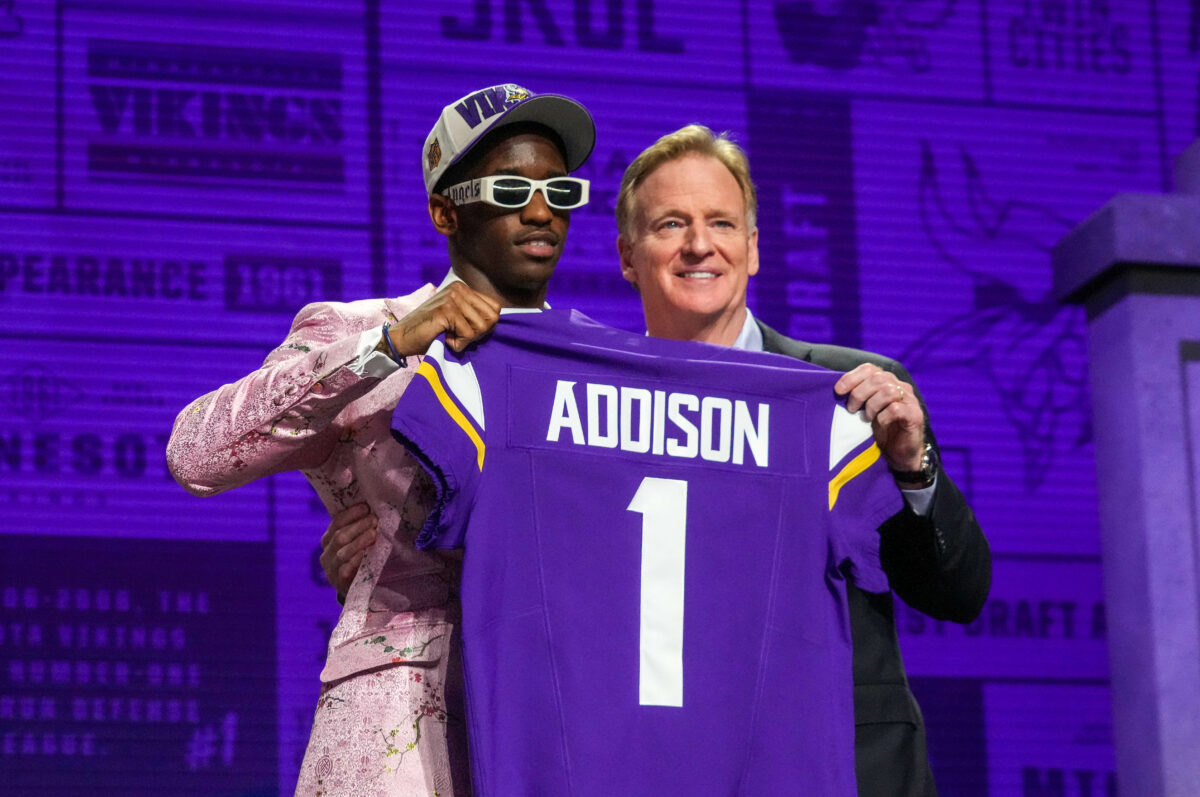When the Minnesota Vikings decided to draft Jordan Addison with the 23rd pick in the 2023 NFL Draft, I immediately pointed to all the positives. He was one of the more pro-ready receivers in a draft that “lacked talent.” He’s a perfect complement to what Jefferson does best with his ability to get open underneath coverages. Addison flourished off pre-snap motions and flares in Lincoln Riley’s offense, adding another avenue for production in O’Connell’s offense. He fits like a glove.
Not to mention, a second wide receiver was a necessity. Minnesota lost hometown favorite Adam Thielen this off-season to the Carolina Panthers. With an extension for Justin Jefferson looming around, you have to surround him with as much help as possible to accentuate what he does best.
But it also got me thinking about the value of drafting a WR2 this high. How has it worked for other teams? Would it work here? Is this a gamble worth taking in this stage of rebuilding the roster?
So, I did some research from drafts past and found a few situations where WR2s got drafted in the top 50 picks in the NFL draft. I took the data from the 2018-2020 drafts. That way, there are, at minimum, three years of production and situational differences to analyze. And within those situations, three separate scenarios continued to arise that we are going to discuss.
